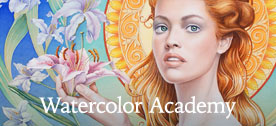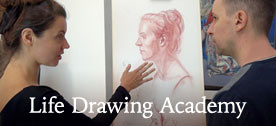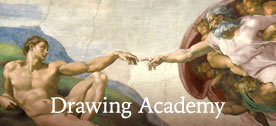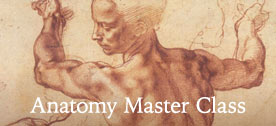Art Lesson 49, Part 3
How to Paint a Self Portrait Using a Mirror
Learn how to paint like the Old Masters!
Old Masters Academy Online Course
Self-study, self-paced online video course Lifetime membership One-time payment: $487 Enroll Now!Personal Tutoring online + Online Course
Unlimited tutoring by the Academy teachers Lifetime membership One-time payment: $997 Enroll Now!« Back to the Art Lessons List
How to Build a Painting with Loose Strokes
Note that the facial features are painted to be very pronounced. Eyes, nose and mouth have an exaggerated contrast between the light and shadow. The darkest parts of the face are so dark that they almost look black. Such dark colors are required as a foundation for the lighter semi-opaque paints that will go on top. What we are doing now is a preparatory base for the Scumbling Technique.
Later on in this video you will see how the scumbling technique is used.
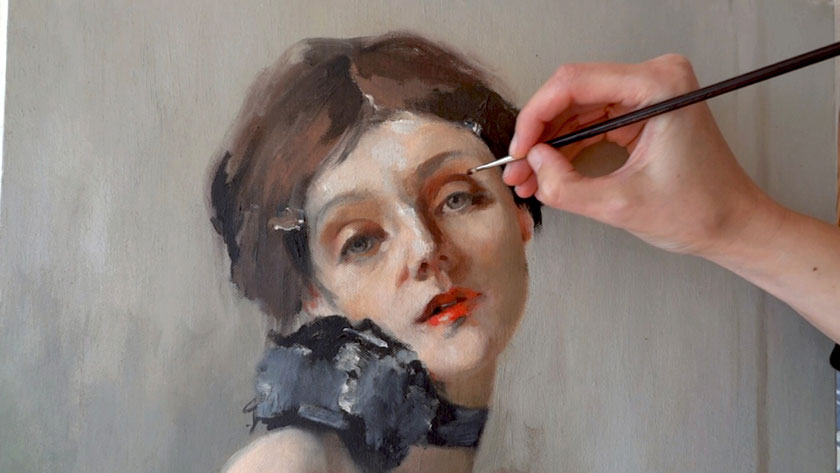
Through the example of this video lesson, you will see a significant difference between scumbling and glazing techniques. The effect achieved by scumbling is not the same as that achieved by glazing. With the scumbling technique, lighter, semi-transparent paints go on top of the darker background and we are working from dark to light. The traditional glazing technique uses transparent layers of darker colors and works from light to dark.
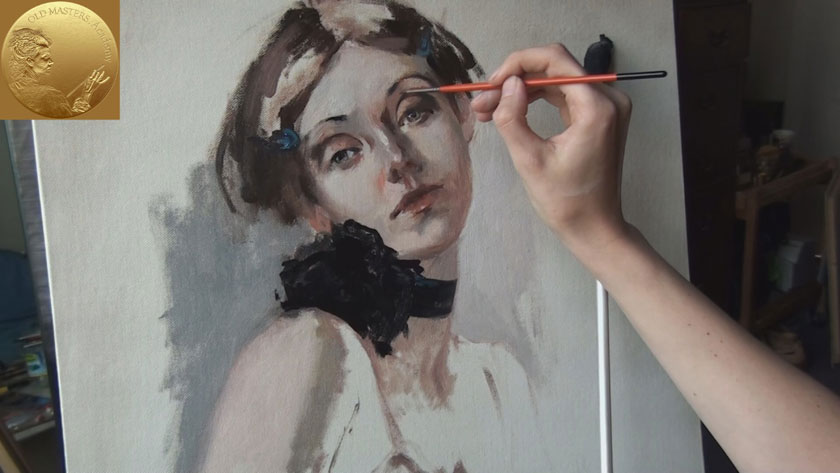
We continue to work on the face. Our plan for this portrait is as follows: we intend to finish the under-painting in high contrast, deliberately making dark parts darker and light parts lighter than required for the end result. After that, the painting will be left to dry. Then it will be continued using scumbling with the flesh color paint.
For the scumbling layer we are mixing the following opaque paints: Naples Yellow, Cadmium Red and Titanium White. We apply a thin layer of the mix over light parts of the face, adding the pink tint of the skin.
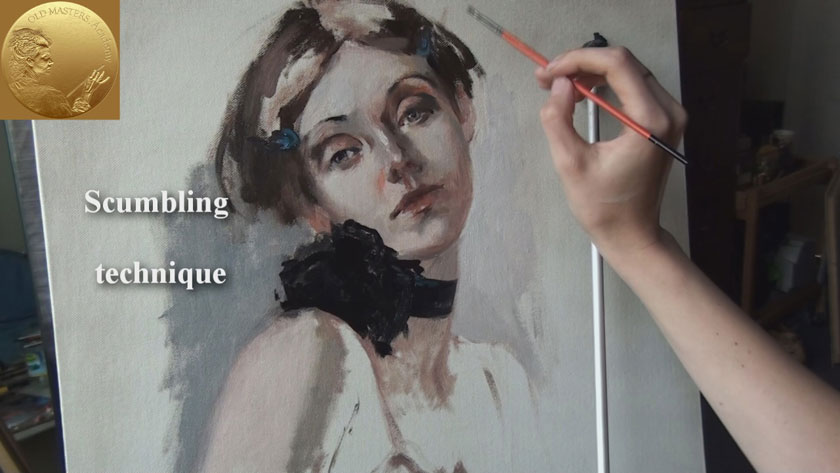
We are continuing with darker places on the face and gradually covering them up with semi-opaque paint. As a result, we are creating an opalescent effect. The contrast between the darker and lighter tones is evening up.
